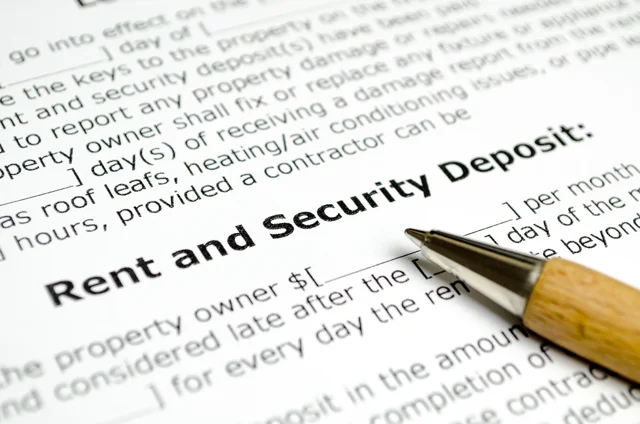Table of Contents
Understanding First Month, Last Month, and Security Deposits
Each payment serves a different purpose in a rental agreement. Clear definitions reduce conflict and set expectations for everyone involved.
| Item | Purpose | Who Holds It | How It’s Applied | Refundable? |
|---|---|---|---|---|
| First Month Rent | Pays for the initial month of occupancy. | Landlord/manager (as rent income). | Credited to Month 1 rent. | No (it’s rent). |
| Last Month Rent | Prepaid rent for the final month; prevents end-of-lease nonpayment. | Landlord/manager; typically held in a rent liability account. | Applied only to the final month’s rent. | No (it offsets last month’s rent). |
| Security Deposit | Protects against damage beyond normal wear, unpaid rent, or cleaning (if allowed). | Held in trust/escrow per state law; sometimes interest-bearing. | Used only for lawful deductions with itemization. | Yes—minus lawful deductions; returned within statutory timeline. |
What Does “First and Last Month Rent” Mean?
“First and last” means both the initial and final month’s rent are paid upfront before move-in. It provides certainty for the landlord and clarity for the tenant about the end of the lease.
- Immediate payment: typically due at signing or before keys are released.
- Tenant security: the last month is already covered at lease end.
- Landlord assurance: reduces risk of final-month nonpayment.

Legal Requirements & State Variations
Rules vary widely by jurisdiction. Key variables include deposit caps (often 1–2 months’ rent), interest requirements on held funds, accounting and notice rules, and return timelines (commonly 14–30 days after move-out). Some states restrict collecting first + last + security simultaneously or cap the total upfront amount.
Action: owners/agents should check their state statutes and any local ordinances before setting terms; tenants should review the lease and official state/city resources.
When to Pay Deposit and First Month Rent
- At lease signing: most common; reserves the unit.
- Before move-in: required in some workflows before key exchange.
- Per written agreement: always follow the timing specified in the lease or approval email.
How Does Last Month Rent Work?
- Applied to the final month’s rent only, not damages or cleaning.
- Should be recorded separately from the security deposit in your ledger.
- If rent increases during the term, the lease should state how the prepaid last month is handled (e.g., tenant pays the difference).
Security Deposits: Purpose, Limits, and Use
- Purpose: cover unpaid rent, damage beyond normal wear, and cleaning if the lease allows.
- Limits: many states cap deposits; verify your maximum.
- Use: deductions must be lawful, reasonable, and itemized with documentation.
- Return: refund within the statutory window; include itemized statement and receipts where required.

Can Landlords Ask for First, Last, and Security?
Often yes—but some jurisdictions limit the total upfront amount. Weigh local regulations, market conditions, and tenant affordability to set fair, compliant terms.
Best Practices for Property Owners and Agents
- Spell out amounts, due dates, banking/escrow details, and return timelines in the lease.
- Use trust/escrow accounts per state rules; separate last month rent from the security deposit in accounting.
- Provide written move-in/move-out checklists with photo/video documentation.
- Offer a one-page “Rent & Deposit Summary” at signing to reduce questions.
- Review policies annually for legal updates and market alignment.
Communicating Rent & Deposit Terms to Tenants
- Use plain language and examples (“If rent is $2,000…”).
- Explain normal wear and tear vs. chargeable damage with examples.
- Give tenants a written FAQ and an email contact for billing questions.
Handling Disputes & Returning Deposits
- Complete a pre-move-out walkthrough with a written punch list.
- Send itemized deductions with receipts/photos within the legal timeline.
- Offer a reasonable dispute window (e.g., 5–7 days) to clarify charges.
Real-World Examples & Case Studies
- Clarity prevents conflict: Owners who issued a one-page deposit summary saw fewer post-move-out disputes.
- Tech improves trust: Using e-sign + photo checklists reduced charge disputes and sped refunds.
Key Takeaways & Actionable Solutions
- Define first, last, and deposit in the lease with amounts and timing.
- Follow your state’s caps, banking rules, disclosures, and return deadlines.
- Document everything (photos, logs, itemizations) to protect all parties.
- Use software or organized spreadsheets to track funds and deadlines.
Need help managing rent collections, deposits, and tenant communications? Allegiant Management Group makes property management simple, compliant, and stress-free.
Request a Free Rental AnalysisFrequently Asked Questions (FAQs)
Is last month’s rent the same as a security deposit?
No. Last month’s rent pays for the final month only. A security deposit covers damage/unpaid rent and is refundable minus lawful deductions.
Can a landlord use my deposit for normal wear and tear?
No. Normal wear (e.g., minor wall scuffs, light carpet wear) is not chargeable. Damage (holes, pet stains, broken fixtures) may be deductible.
What if rent increases during my lease—does the prepaid last month cover it?
Your lease should explain this. Some require the tenant to pay the difference if rent rises before the last month.
How do I get my security deposit back quickly?
Provide proper notice, complete required cleaning, return keys, attend a move-out walkthrough, and leave a forwarding address.



